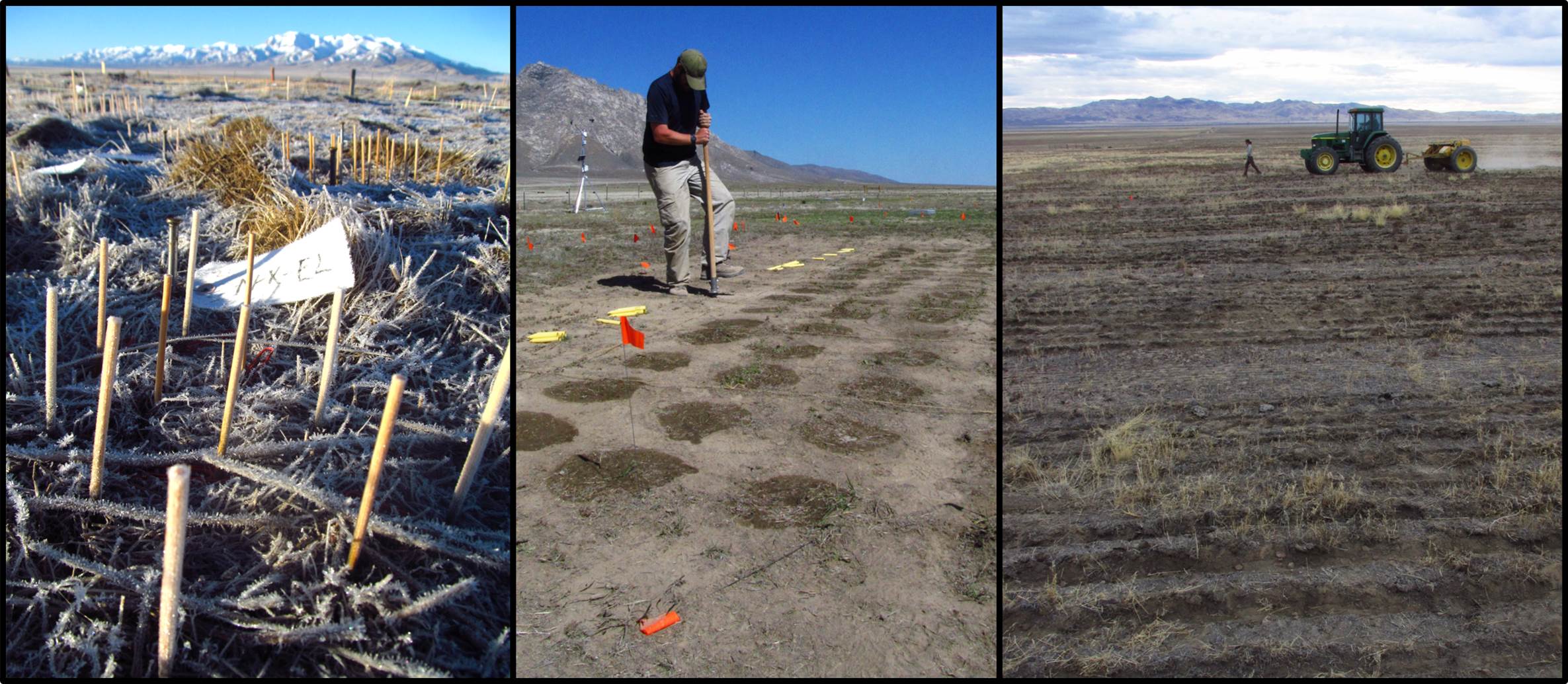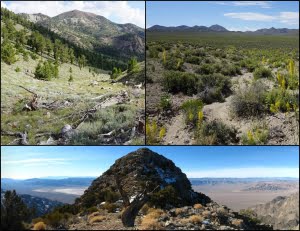
Comparing Dobermans to Chihuahuas: Great Basin plants are adapted to local conditions
Habitat Restoration With Local Seed More Likely to Succeed
Despite great efforts, native restoration in the Great Basin is very often unsuccessful, especially in warmer and drier parts of the region. The findings of this study strongly support shifting to an approach that generates and preserves diverse and wild varieties of native species, then matches them to their adapted environments, similar to long-used strategies in forest regeneration and silviculture.
The researchers found that when plants were moved beyond the environmental region where they are adapted, climate may constrain their success. For example, in a subset of 27 experiments examined, two thirds showed higher local plant survival and 90% revealed greater flowering and reproduction for local plants compared to plants sourced from a distant location.
“It’s now clear that across the Great Basin, local plants have a home turf advantage over seeds from another area, even of the same species,” notes Tom Kaye, Executive Director of the Institute for Applied Ecology, and one of the authors of the study. “Planting the right seed in the right place just makes sense, and it saves money because habitat restorations are more likely to succeed.”
Fortunately, recent research on a handful of the species most important for restoration in the Great Basin has extensively examined natural trait variation to produce maps of “seed zones” that define where it is appropriate to transfer seeds from a particular location while keeping within its adapted environment. The findings of this new and ongoing research show that such variation within species is likely the norm for the many other plant species native to the region, which number in the thousands.
In addition to having practical implications for restoration, the study is the largest yet to examine within-species variation for an entire community within a single region, uncovering which plant traits are adapting to the unique Great Basin environment, and which environmental conditions are responsible for these adaptations. An improved understanding of how and why plants evolve to their surroundings is important knowledge as environments are rapidly changing due to increased disturbance, invasive species, and a changing climate.
“We’ve known for decades that local adaptation is common in nature, and we know in theory that an understanding of local adaptation should inform how we manage and restore natural resources,” says Matt Forister, professor at the University of Nevada, Reno. “However, it takes decades of studies and ultimately a review paper of this kind to bring the issue into sufficient focus, for one particular region, so that knowledge can improve management on the ground.”
The authors of the study include researchers from the Department of Biology at the University of Nevada Reno, Institute for Applied Ecology, Washington State University, and USDA Forest Service.
FOR MORE INFORMATION
Original scholarly publication: Strong patterns of intraspecific variation and local adaptation in Great Basin plants revealed through a review of 75 years of experiments
Rocky Mountain Research Station, USDA Forest Service, Boise, Idaho
Department of Biology, University of Nevada, Reno, Nevada
Institute for Applied Ecology, Corvallis, Oregon
Deschutes National Forest, USDA Forest Service Pacific Northwest Region, Bend, Oregon
Washington State University, Pullman, Washington
Pacific Northwest Research Station, USDA Forest Service, Corvallis, Oregon
Restoration
Research
Education
Contact
Main Office:
4950 SW Hout Street
Corvallis, OR 97333-9598
541-753-3099
info@appliedeco.org
Southwest Office:
1202 Parkway Dr. Suite B
Santa Fe, NM 87507
(505) 490-4910
swprogram@appliedeco.org
© 2025 Institute for Applied Ecology | Privacy Policy

